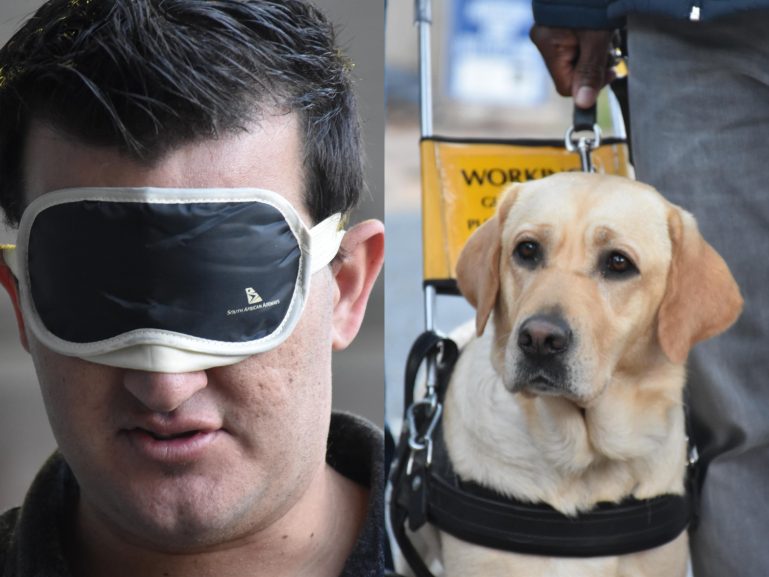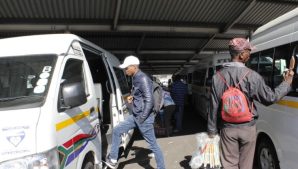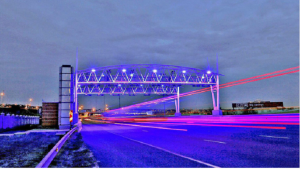On International Guide Dog Day on Wednesday, SABC radio host Justin Kennerley went out at 6 o’clock in the morning to meet up with the South Africa Guide Dog Association in Rosebank, Johannesburg.
There, he took off his glasses, covered his eyes completely with a blindfold, and was told to rely on a Labrador dog named Bonnie trained to guide the blind as they walk the streets for balance and direction.
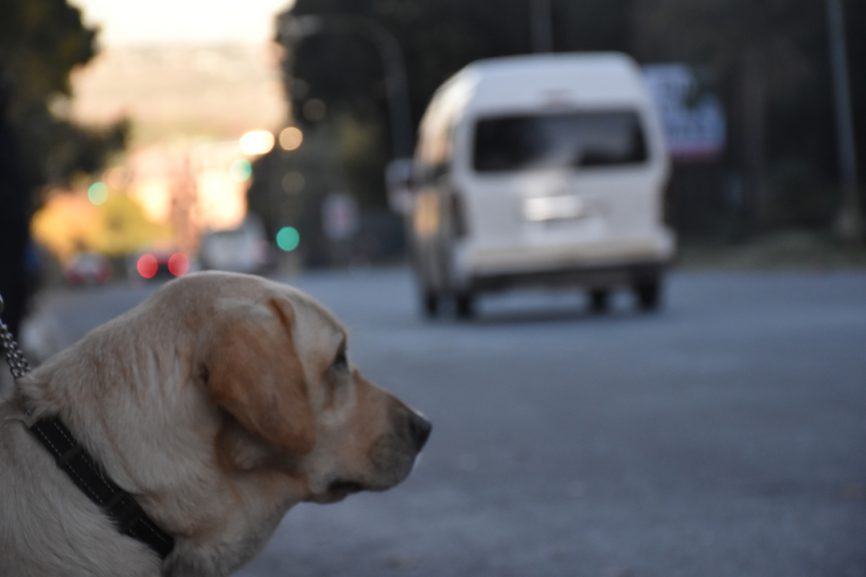
With Bonnie, the guide dog and a professional guide dog trainer, Justin wobbled and inched his way through the streets of Rosebank.
Many times the trainer had to instruct Justin on how to speak to the guide dog, how to guide and yet be guided by the dog simultaneously, and position him so that he would avoid objects on the sidewalk that he did not yet know how to dodge with just the dog alone.
Justin got several looks as he struggled to move through the city. After crossing busy streets, climbing stairs and even getting on an escalator, Justin had finished his tour and removed his blindfold with a large smile on his face.
The reality is, however, that visually impaired South Africans have no blindfold to take off; the challenges that Justin faced just walking the city streets for two hours are the obstacles that people with vision disabilities face every day.
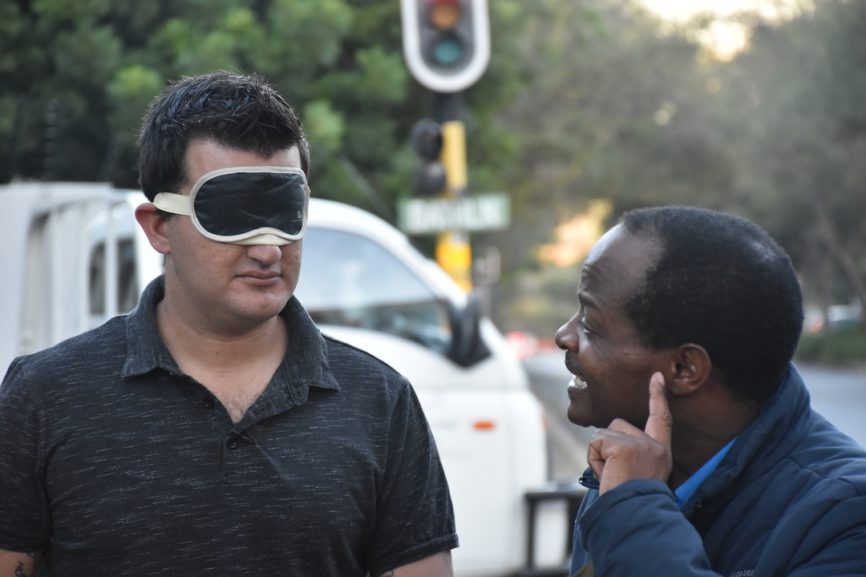
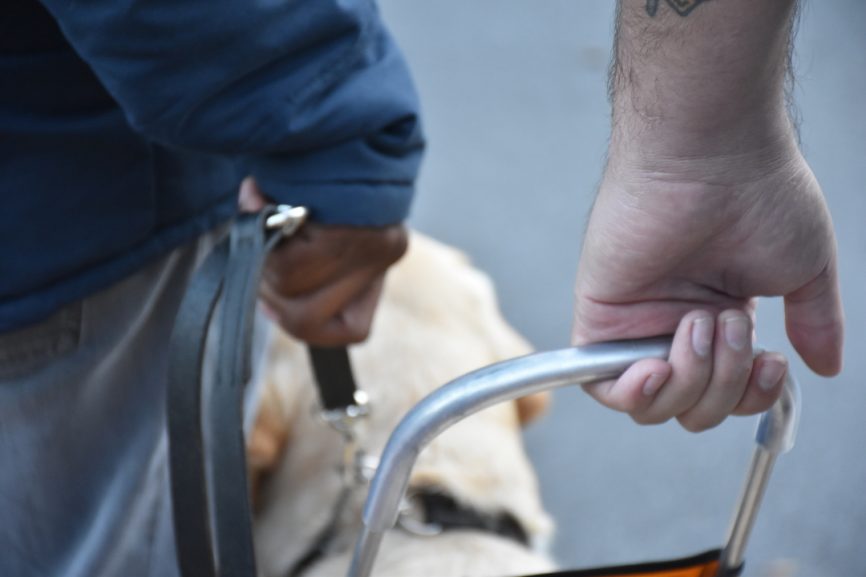
97% of all blind and partially sighted are unemployed
According to the South African National Council for the Blind (SANCB), sight disability is the most prevalent of all disabilities in South Africa, accounting for 32% of all disabilities in the country.
Additionally, the SANCB expanded on the marginalisation and disenfranchisement of visually disabled South Africans, citing that 97% of all blind and partially sighted South Africans are unemployed and in some regions that percentage increases up to 100%.
80% of the visually impaired in the country live in rural areas, of which access to healthcare, health services, and employment can be limited or even nonexistent.
The solutions to help fix or alleviate the problems that the visually impaired face every day are few and scarce to come by. The South Africa Guide Dogs Association, for example, only has 400 service dogs available in a country that has millions of visually impaired citizens.
Additionally, according to the SANCB, 39.1% of global blindness is caused by cataracts, which is an eye disease curable by surgery in the hospital. However, with a lack of health services in rural areas, where South Africa’s visually impaired population predominantly resides, it can be very challenging and sometimes impossible for those blinded by cataracts to access the tools needed to prevent or remove the condition.
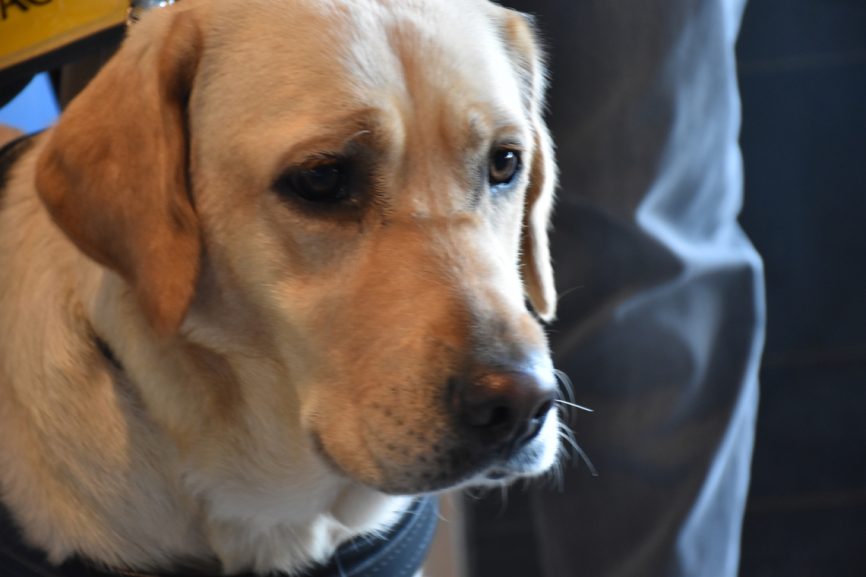
As a result, many South Africans are left with limited economic, political, and class mobility because they are not exposed to the kinds of services they need to live a normal life.
In the Statistics South Africa 2016 Community Survey, over 4 million people reported having some difficulty seeing, and over 800 000 people reported having a lot of difficulty seeing.
Because of their disability, many citizens face massive unemployment, severely limited travel ability, and illiteracy. Without these resources, and in addition to the lack of services needed to remedy their situation, these South Africans could remain disenfranchised for several years, if not decades.
Nevertheless, Justin’s walk through Rosebank may have shed a little more light on the lives of visually impaired people and their day-to-day experiences. A resource like a guide dog for the visually impaired is one of numerous possible solutions or alleviation to the issues that disabled people face.
Click below to see how Justin’s day proceeded.


